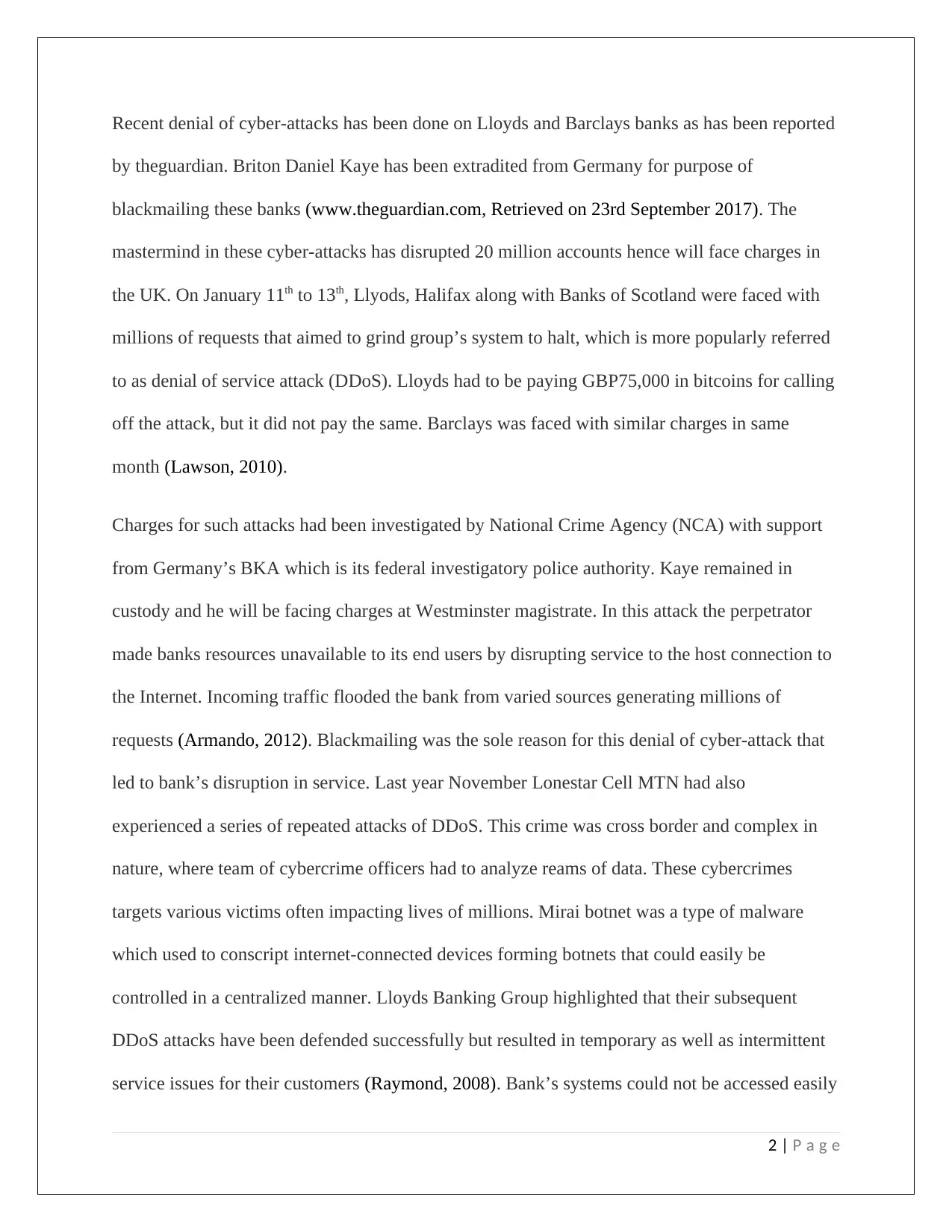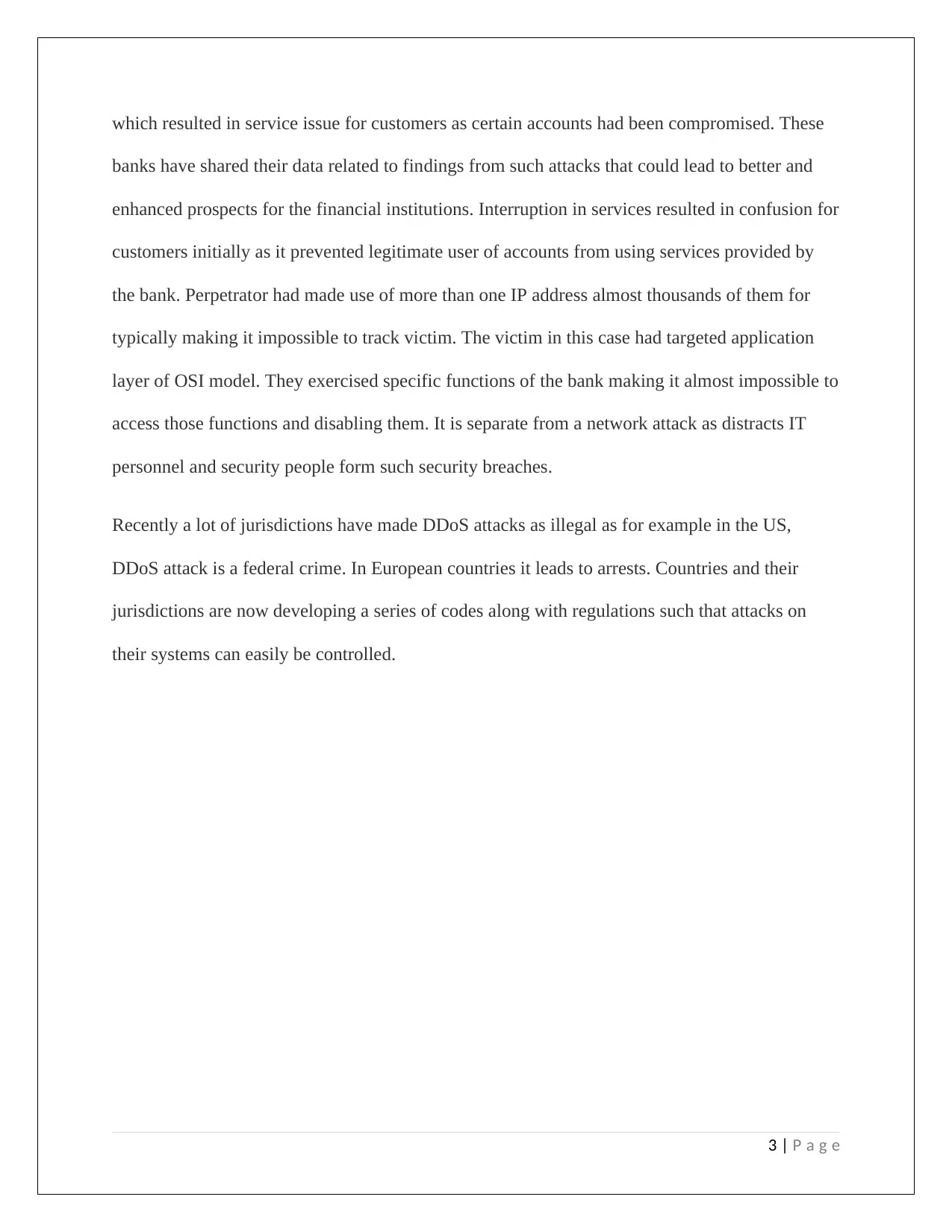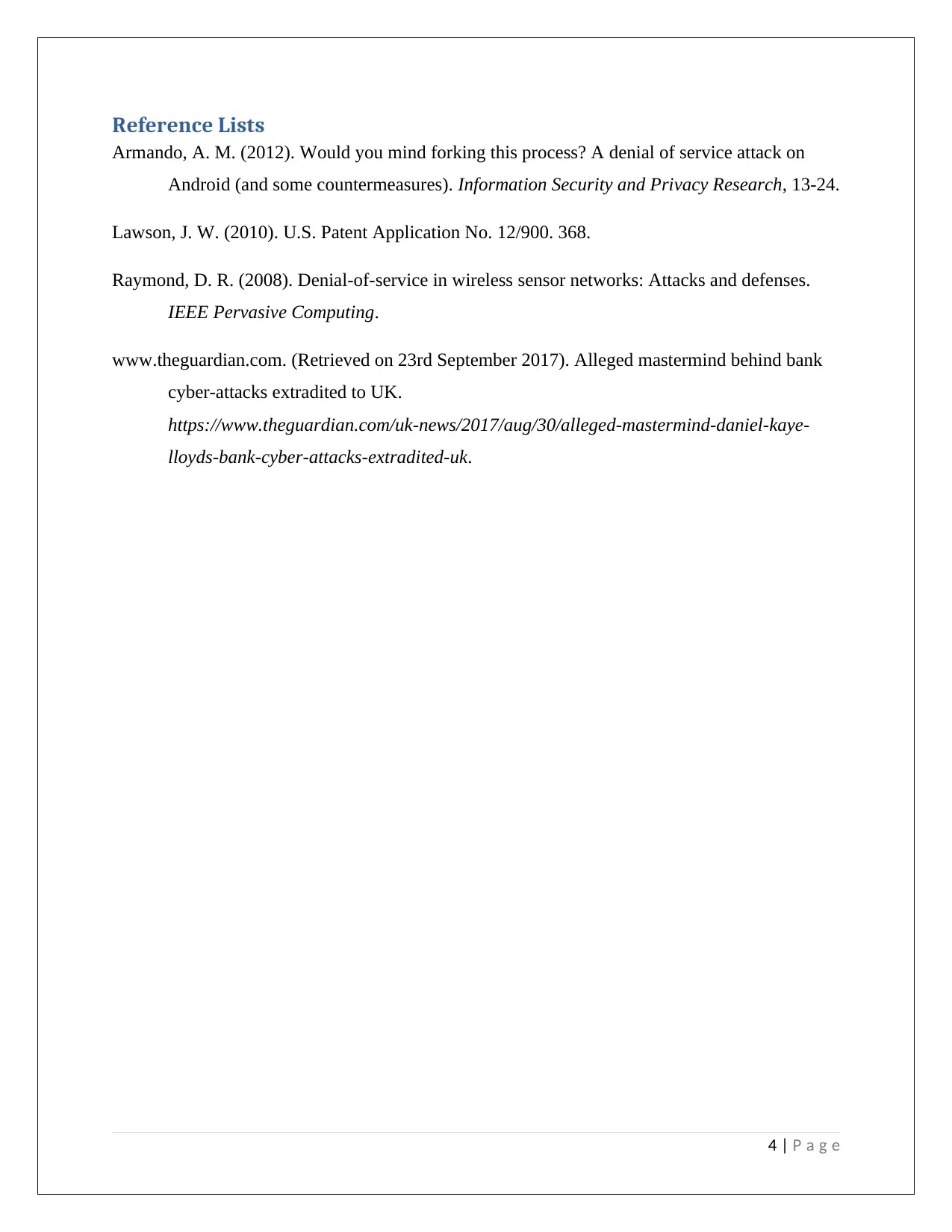Report: Analysis of Recent Denial of Service Cyber Attacks
VerifiedAdded on 2020/04/01
|4
|688
|137
Report
AI Summary
This report analyzes a recent article discussing Denial of Service (DDoS) attacks on Lloyds and Barclays banks. The attacks, orchestrated by a mastermind, disrupted services, leading to blackmail attempts and significant financial losses. The report details the methods used, including flooding the banks with millions of requests, making resources unavailable to end-users. It also discusses the involvement of the National Crime Agency (NCA) and Germany's BKA, along with the use of Mirai botnets. The article highlights the impact on customers, temporary service interruptions, and the evolving legal responses to such cybercrimes, including the classification of DDoS attacks as a federal crime in the US. Furthermore, the report emphasizes the cross-border nature of these attacks and the complexities involved in investigating them. The report also includes references to relevant research papers and news articles to provide a comprehensive understanding of the topic.
1 out of 4





![[object Object]](/_next/static/media/star-bottom.7253800d.svg)